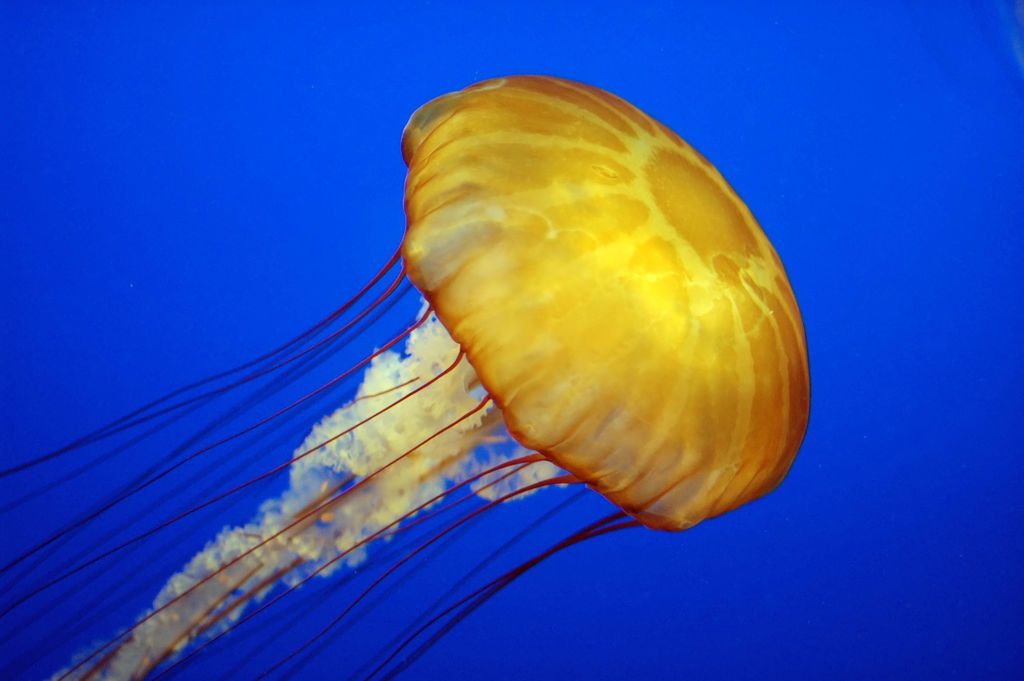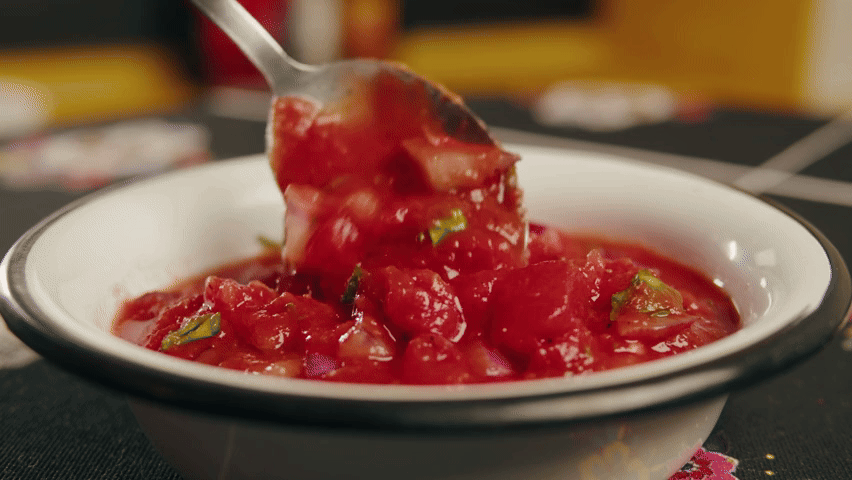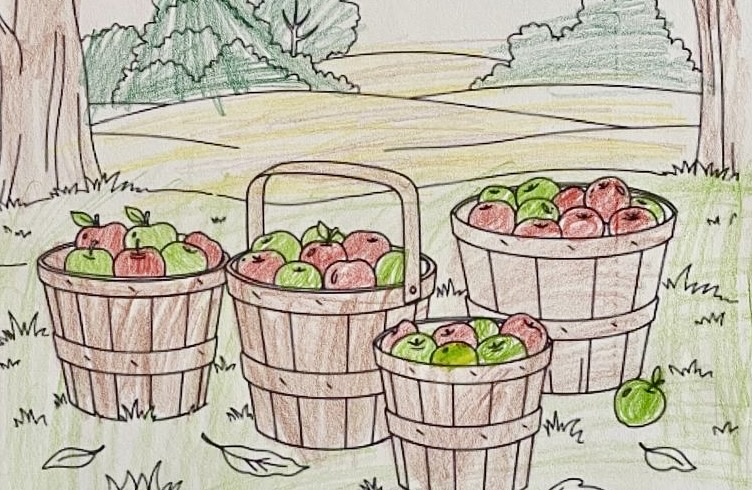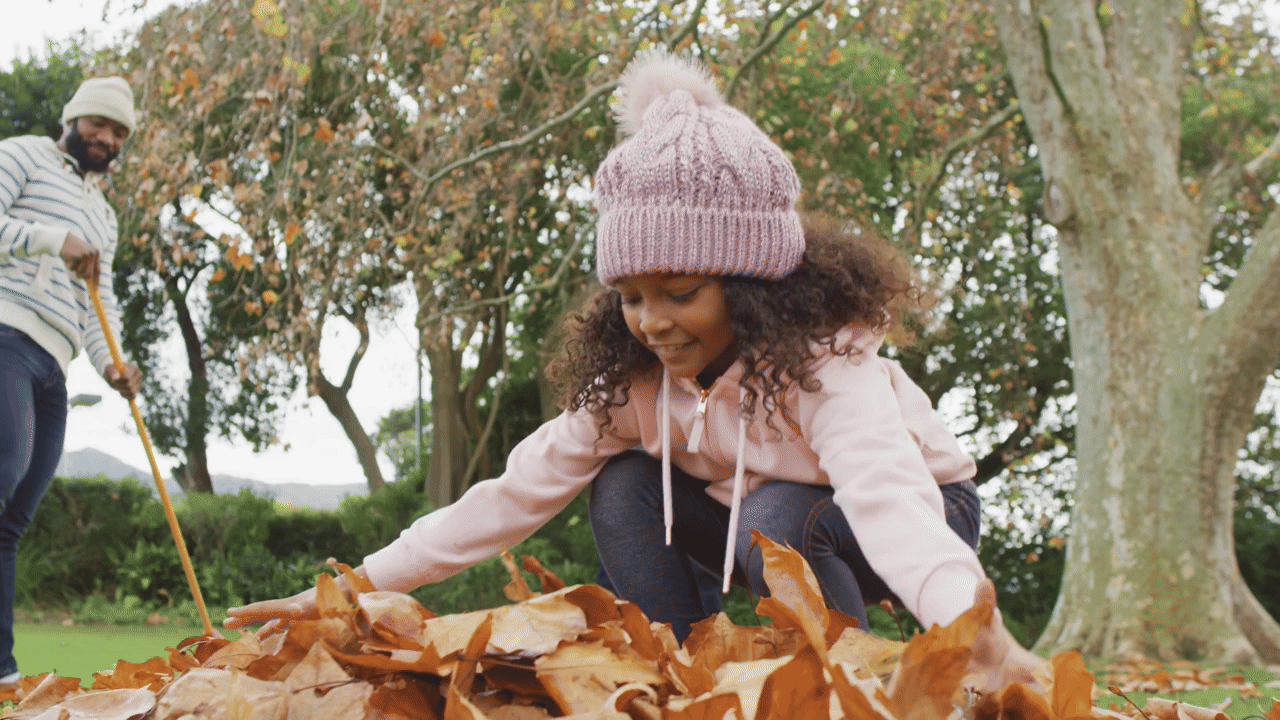
Can you draw something that is practically transparent? This first activity is a scientific drawing adventure and investigation into Sea jelly locomotion and shape-shifting. Three age-appropriate interactive activities available below means that parents and teachers are covered for K-6 learning goals that have kids counting the movement “pulses”, draw the changing shapes, and learning how scientists historically used art techniques to study these fascinating creatures. Also, don’t miss our book review of “Jellyfish Scientist: Maude Delap and Her Mesmerizing Medusas” a book that was just recently published about how this Irish self-taught scientist changed our understanding of these creatures forever!
🌊 Sea Jelly Sketching Adventure 🎨
Inspired by “The Jellyfish Scientist: Maude Delap and Her Mesmerizing Medusas”
🌟 Young Explorer Activities (Grades K-2)
Shape Detective 🔍
Look & Draw: Sea jellies look like umbrellas floating in water!
Can you draw:
- A big circle for the bell (top part)
- Wavy lines hanging down for tentacles
- Dots or circles for decoration
Movement Magic ✨
Watch & Move: Sea jellies move by squeezing and relaxing!
Try this:
- Open your hand wide (like an open umbrella)
- Close it slowly (like a closing umbrella)
- That’s how sea jellies swim!
Pulse Counter: Count how many times you can open and close your hand!
🖍️ Drawing Tips for Little Artists
- Start with simple shapes
- Use lots of colors – sea jellies can be pink, blue, purple, or clear!
- Make your tentacles wiggle by drawing wavy lines
- Add sparkles or dots to show they’re see-through
New Words to Learn:
Bell: The round top part of a sea jelly
Tentacles: The long stringy parts that hang down
Float: To stay on top of the water
🔬 Junior Scientist Activities (Grades 3-4)
Shape Explorer 📐
Observe & Sketch: Sea jellies have different body shapes!
In your sketch, try to capture:
- Bell shape: Is it round like a dome, flat like a plate, or tall like a bell?
- Symmetry: Draw a line down the middle – are both sides the same?
- Tentacle arrangement: Do they hang from the edge or underneath?
- Size comparison: Draw something next to it to show size (like a fish or your hand)
Movement Patterns 🌊
Observe the Rhythm: Sea jellies have a pulsing rhythm like a heartbeat!
Up & Down
Spinning
Drifting
Pulsing
Rhythm Timer: Time the pulses! How many times does it pulse in 1 minute?
🎨 Advanced Sketching Techniques
- Show transparency: Use light lines and leave some areas uncolored
- Add movement: Draw curved lines around the jelly to show water flow
- Detail work: Add patterns or spots on the bell
- Multiple views: Try drawing from the side AND from below
🏆 Sketch Challenge!
Can you draw a sea jelly at 3 different moments of its swimming motion?
Label each drawing: “Contract,” “Relax,” and “Glide”
Scientific Vocabulary:
Medusa: Another name for the adult sea jelly
Propulsion: How sea jellies push themselves through water
Transparent: See-through, like glass
Cnidarian: The animal group sea jellies belong to
🧪 Advanced Research Activities (Grades 5-6)
Scientific Observation & Documentation 📊
Detailed Analysis: Like Maude Delap, create scientific sketches!
Your observation sheet should include:
- Anatomical features: Bell, oral arms, tentacles, rhopalia (if visible)
- Proportions: Measure and note the ratio of bell width to height
- Texture details: Smooth, bumpy, ridged, or spotted patterns
- Color variations: Note any color changes or gradients
- Scale reference: Include a measurement scale in your sketch
Movement Analysis & Rhythm Study 📈
Locomotion Research: Document the sea jelly’s movement patterns
Create a movement diagram showing:
- Contraction phase: Bell muscles contract, water expelled
- Relaxation phase: Bell expands, water drawn in
- Recovery phase: Brief pause before next pulse
Pulse Rate Calculator: Count pulses for accurate scientific data
Calculate: Pulses per minute = (Total pulses ÷ 2)
Biomechanics Investigation 🔬
Advanced Observations:
- How does bell shape affect swimming efficiency?
- Do tentacles create drag or help with stability?
- How does the jelly change direction?
- What happens to the bell shape during fast vs. slow swimming?
🖊️ Scientific Illustration Techniques
- Cross-hatching: Show transparency and depth
- Stippling: Create texture with tiny dots
- Annotations: Label all major body parts
- Multiple perspectives: Include dorsal, ventral, and lateral views
- Movement arrows: Show water flow and propulsion direction
🏅 Marine Biologist Challenge!
Create a complete scientific plate with:
- Detailed anatomical sketch with labels
- Movement sequence diagram (4-6 frames)
- Data table: Record pulse rate, estimated size, and observed behaviors
- Hypothesis: How might this jelly’s shape help it survive?
Advanced Scientific Terms:
Mesoglea: The jelly-like substance between cell layers
Nematocysts: Stinging cells on tentacles
Jet propulsion: Movement by expelling water
Radial symmetry: Body parts arranged around a central axis
Pelagic: Living in open ocean water
📚 Standards Alignment for Educators (Click to expand)
Grades K-2 Standards
- CCSS.ELA-LITERACY.SL.K-2.1: Participate in collaborative conversations
- CCSS.ELA-LITERACY.SL.K-2.5: Create visual displays (drawings) to express ideas
- CCSS.ELA-LITERACY.L.K-2.6: Use words and phrases acquired through conversations and reading
- NGSS K-LS1-1: Use observations to describe patterns in the natural world
- CCSS.MATH.CONTENT.K.CC.B.4: Understand relationship between numbers (counting pulses)
Grades 3-4 Standards
- CCSS.ELA-LITERACY.W.3-4.7: Conduct short research projects
- CCSS.ELA-LITERACY.RI.3-4.7: Use information from illustrations and text
- NGSS 3-LS1-1: Develop models to describe organisms have unique life cycles
- NGSS 4-LS1-1: Construct argument that animals have internal/external structures
- CCSS.MATH.CONTENT.3.MD.B.4: Generate measurement data (timing pulses)
- CCSS.MATH.CONTENT.4.G.A.3: Recognize lines of symmetry in figures
Grades 5-6 Standards
- CCSS.ELA-LITERACY.RST.6.3: Follow multistep procedure when carrying out experiments
- CCSS.ELA-LITERACY.RST.6.4: Determine meaning of domain-specific vocabulary
- CCSS.ELA-LITERACY.W.5-6.2: Write informative texts to examine topic
- NGSS MS-LS1-5: Construct explanation based on evidence for how body systems interact
- NGSS MS-LS1-8: Gather information about animal behaviors
- CCSS.MATH.CONTENT.6.RP.A.1: Understand ratio concepts (proportions in sketching)
- CCSS.MATH.CONTENT.5.MD.B.2: Represent and interpret data
Additional Skills Developed: Fine motor skills, scientific observation, artistic expression, vocabulary development, following multi-step directions, and connecting literature to hands-on learning.
Now, try creating a wiggly sea creature using everyday materials!






